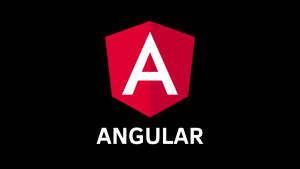15 Backend Development Tools For Web Developers

Backend development forms the backbone of any web application. It powers the website’s functionality and enables seamless interactions between the user interface and server. It is widely recognized that backend development is typically more complex than frontend development and indeed it is a much vaster domain than it seems.
However, it is worth considering that things can become convenient with the adoption of the right toolset. It will allow developers to streamline their workflow, enhance efficiency, and unlock new possibilities for building robust and scalable web apps.
We have gathered 15 popular backend development tools that will help you increase productivity by speeding up the development procedures.
Programming languages
Among various tools and technologies for backend development, let’s begin with exploring programming languages suited for this purpose.
Each language has its strengths and weaknesses and requires you to be backed with proficiency in using them. Therefore, choosing one between them depends on various factors like project requirements and the developer’s expertise.
However, if a language fits your project but you lack the staff or technical know-how, consider engaging the web development services of a professional developer. It will help you navigate the complexities of web development effectively.
Node.js
JavaScript is not limited to front-end web development anymore. With the introduction of Node.js, it can now be used for server-side programming as well. Node.js is a runtime environment that allows developers to execute JavaScript code server-side. It enables the creation of scalable and high-performance web applications. It is well-suited for building real-time web applications and APIs due to its even-driven architecture and non-blocking I/O operations.
Features
- Cross-platform compatibility
- Scalable
- Performance and scalability
PHP
PHP is a server-side scripting language widely used for web development. It’s known for flexibility and wide adoption across the web. PHP is specially designed for building dynamic web pages and web applications.
This programming language comes with a wide range of functionalities and frameworks, such as Laravel, Symfony, and CodeIgniter, which facilitate rapid development. PHP is commonly integrated with databases like MySQL, making it a popular choice for building content management systems (CMS) like WordPress, eCommerce platforms, and other web applications.
Features
- Platform independence
- Database integration
- Dynamic typing
- Built-in security features
- Object-oriented programming
Java
Java is a high-level, object-oriented programming language known for its portability, security, and robustness. While Java is commonly associated with building desktop and mobile applications, it is also widely used for backend development. Java’s ecosystem includes powerful frameworks and technologies like Spring, Hibernate, and Apache Struts, which simplifies the development of scalable and complex web solutions.
Features
- Platform independence (write once, run anywhere)
- Multi-threading support
- Robust exception handling
- Security features
- Automatic memory management
Python
This versatile programming language is used in various domains, including web development, data science, artificial intelligence, and automation. For backend web development, Python is used with frameworks like Django and Flask, which provide robust tools and libraries for building web applications quickly and efficiently.
The clear and concise syntax and extensive standard library of Python make it an ideal choice for prototyping, scripting, and building scalable websites and web applications.
Features
- Dynamic typing
- Automatic memory management
- High-level data structures
Frameworks
After programming languages, let’s see the list of back-end frameworks. Here, we are mentioning the popular backend toolset that is often present in the list of expert developers or companies that provide backend development services. These frameworks offer a range of features and capabilities to streamline the backend development and empower developers to build robust web applications.
Express.js
It is a minimal and flexible Node.js web application framework that provides a robust set of features for building web applications and APIs. It simplifies handling HTTP requests, routing, middleware integration, and more, making it a popular choice among developers.
Features
- Template engines integration
- WebSockets support
- HTTP methods handling
- Error handling
- Routing
- Middleware support
Django
This Python-based web development framework provides developers with a comprehensive set of tools and features for building web applications quickly and efficiently. It emphasizes rapid development, clean design, and the principle of “don’t repeat yourself” (DRY).
Features
- Object-relational mapping (ORM)
- URL routing
- Template system
- Admin interface
Laravel
Laravel is a PHP web framework that makes it easier to build robust and maintainable web solutions. It follows the Model-View-Controller (MVC) architectural pattern and provides a rich set of features for building web applications, including routing, middleware, authentication, and database management.
Features
- Artisan command line interface
- Eloquent ORM
- Blade templating engine
Spring Boot
It is a popular Java framework for building microservices and cloud-native applications. This simplifies configuration and deployment, allowing developers to focus on writing business logic rather than boilerplate code.
Features
- Auto-configuration
- Embedded web server
- Spring Boot starters
- Spring Boot DevTools
Databases
DBs work as organized repositories for storing, managing, and retrieving structured and unstructured data. They are essential for creating a wide range of applications, from simple web apps to complex enterprise systems. Whether you are a professional web developer or a web development service provider, you must have a thorough understanding of databases to effectively design, build, and maintain robust web solutions. Below, we are highlighting some of the widely used databases that you can consider to meet the diverse needs of your project.
MySQL
It is a popular relational database management system (RDBMS), that is known for its reliability, performance, and ease of use. MySQL helps to organize data into tables with rows and columns. It uses structured query language (SQL) for querying and managing data.
Features
- ACID compliance
- Transactional support
- GUI support
- Dual password support
PostgreSQL
PostgreSQL, often referred to as Postgres, is an advanced open-source relational database system. Unlike MySQL, PostgreSQL focuses on standard compliance and extensibility. It offers support for complex data types, indexing methods, and custom functions.
Features
- Nested transactions
- Common table expressions
- Window functions
- Full-text search
MongoDB
It is a leading NoSQL database management system designed for handling unstructured or semi-structured data in a scalable and flexible manner. Unlike relational databases like MySQL and PostgreSQL, MongoDB stores data in flexible JSON-like documents, and therefore, it allows for dynamic schema design and horizontal scalability.
Features
- Indexing and querying capabilities
- Horizontal scalability via Automatic data partitioning
- GridFS for large file storage
Web servers
They play a crucial role in serving web content to users’ browsers upon request. Let’s have a look at two popular web servers that are Apache HTTP Server and Nginx (pronounced “engine-x”). Both of them power a significant portion of websites worldwide.
Apache
Apache is an open-source and cross-platform server software that is popular for its stability, robustness, and extensive feature set. It supports multiple programming languages, including Perl, Python, PHP, and more. This makes it versatile for hosting various types of web solutions.
Features
- .htaccess support
- SSL/TLS support
- Virtual hosting
- Flexible configuration options
- Robust security features
- Extensive module system
Nginx
It is a lightweight and high-performance web server and reverse proxy server that is designed to efficiently handle concurrent connections and high traffic volumes. The modular event-driven architecture of Nginx offers high performance even under instances of high loads on the server.
Features
- Load balancing
- Cache purging API
- Session persistence based on cookies
- Auto-indexing & handling static files
- URL rewriting & redirection
- IPV6 compatibility
Testing frameworks
Jest
It is a JavaScript testing framework that is primarily used to evaluate applications built using frameworks like React, Vue.js, and Angular. It is known for its simplicity, speed, and comprehensive feature set which makes it a popular choice among JavaScript developers worldwide.
Jest comes with built-in configurations and thus, reduces the overhead of setting up test environments. It lets developers start writing tests immediately without any need for extensive setup.
Features
- Snapshot testing
- Mocking capabilities for isolated testing
- Code coverage reporting
- Built-in async support
JUnit
If you are choosing Java for back-end programming, then for testing, you will find JUnit helpful. It is a popular testing framework for Java applications, providing a simple yet effective toolset for writing and executing unit tests. This framework follows an intuitive syntax, making it accessible to developers of all skill levels.
Features
- Parameterized tests
- Mocking framework integration
- Test runners like ‘JUnitCore’ and ‘JUnit4’
- Annotations to define test methods
Conclusion
We have outlined the popular tools for managing an application’s backend and hopefully, you will find the right one as per your needs. Each tool has its pros and cons and serves a unique purpose in creating dynamic and feature-rich backend systems.
However, the list of tools is endless, and therefore, you may find many other back-end development tools in addition to the popular ones discussed above. So, go and explore the various tools, including the mentioned ones, and tell us in the comment which one you like and which were missing from the list.






